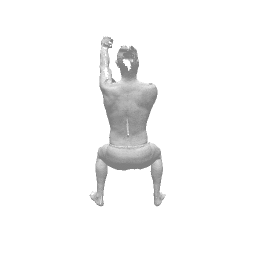Learning elementary structures for 3D shape generation and matching
We propose to represent shapes as the deformation and combination of learnable elementary 3D structures, which are primitives resulting from training over a collection of shape. We demonstrate that the learned elementary 3D structures lead to clear improvements in 3D shape generation and matching. More precisely, we present two complementary approaches for learning elementary structures: (i) patch deformation learning and (ii) point translation learning. Both approaches can be extended to abstract structures of higher dimensions for improved results. We evaluate our method on two tasks: reconstructing ShapeNet objects and estimating dense correspondences between human scans (FAUST inter challenge). We show 16% improvement over surface deformation approaches for shape reconstruction and outperform FAUST inter challenge state of the art by 6%.
PDF Abstract NeurIPS 2019 PDF NeurIPS 2019 AbstractDatasets
Results from the Paper
 Ranked #8 on
3D Dense Shape Correspondence
on SHREC'19
(using extra training data)
Ranked #8 on
3D Dense Shape Correspondence
on SHREC'19
(using extra training data)





 ShapeNet
ShapeNet
 ShapeNetCore
ShapeNetCore
 FAUST
FAUST
 SURREAL
SURREAL
 SHREC'19
SHREC'19